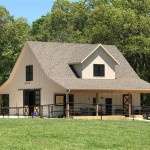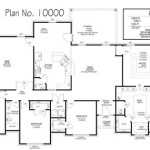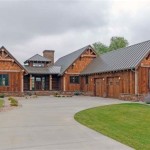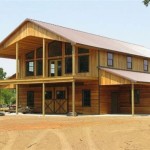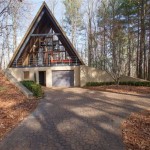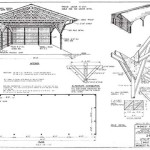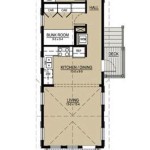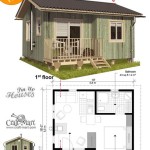Floor Plans For A Cabin
Designing a cabin floor plan that meets your specific needs and preferences is crucial for creating a comfortable and functional retreat. Whether you're planning a cozy getaway for two or a larger family retreat, careful consideration of the layout and flow of spaces is essential. Here are some key aspects to consider when designing floor plans for a cabin:
1. Determine Your Needs
Before you start drawing up plans, take some time to think about how you'll be using the cabin. Consider the number of people who will be staying there, the types of activities you'll be doing, and any special requirements you may have. For example, if you plan on spending a lot of time cooking, you'll need a well-equipped kitchen. Or, if you have mobility issues, you may need to include accessible features such as ramps or wider doorways.
2. Choose a Layout
The layout of your cabin will largely depend on the size and shape of the property, as well as your personal preferences. Common cabin layouts include:
- Open-concept plans feature a combined living, dining, and kitchen area, creating a spacious and airy feel.
- Traditional plans have separate rooms for each function, providing more privacy and quiet spaces.
- Multi-story plans can be a good option for smaller lots, allowing you to maximize space while still maintaining a sense of separation between different areas.
3. Plan for Flow and Functionality
The flow of traffic through your cabin is important for both comfort and safety. Make sure there is a clear path from the entrance to the main living areas, and that there are no awkward or cramped spaces. Consider the placement of furniture and appliances to ensure that they don't obstruct the flow of movement.
4. Create Cozy Spaces
Cabins are often associated with cozy and inviting spaces. Incorporate features that will enhance the comfort and ambiance of your cabin, such as a fireplace, comfortable seating, and plenty of natural light. Use warm colors, soft textiles, and natural materials to create a welcoming and relaxing atmosphere.
5. Consider Outdoor Spaces
Outdoor living is an essential part of the cabin experience. Make sure to include ample outdoor space in your plans, such as a deck, patio, or fire pit area. Consider the orientation of your cabin to take advantage of views and natural light, and provide easy access to outdoor spaces from the main living areas.
6. Energy Efficiency
If you're planning on spending a lot of time in your cabin, it's important to consider energy efficiency. Choose energy-efficient appliances and lighting, and consider incorporating renewable energy sources such as solar panels or a wood stove. Proper insulation and air sealing will also help to reduce energy consumption and keep your cabin comfortable year-round.
7. Seek Professional Help
If you're not experienced in designing floor plans, it's a good idea to seek professional help from an architect or designer. They can help you create a plan that meets your specific needs and preferences, and ensure that your cabin is structurally sound and code-compliant.
Remember, the design of your cabin floor plan should reflect your personal style and needs. By carefully considering the factors discussed above, you can create a comfortable and functional retreat that will provide years of enjoyment.

Small Cabin Home Plan With Open Living Floor

Cabin Floor Plans Logangate Timber Homes

Small Cabin Plan With Loft House Plans

Cabin Floor Plans Authentic Log Cabins Clearwater Historic Lodge

Browse Floor Plans For Our Custom Log Cabin Homes

High Meadow Cabin House Plan Farmhouse Archival Designs

Log Cabin Floor Plans Many To Choose From

Simple Small Cabin Plans

How Do I Choose A Log Cabin Floor Plan

Cabin Style House Plan 3 Beds 2 Baths 1659 Sq Ft 47 437 Plans Lake Floor

